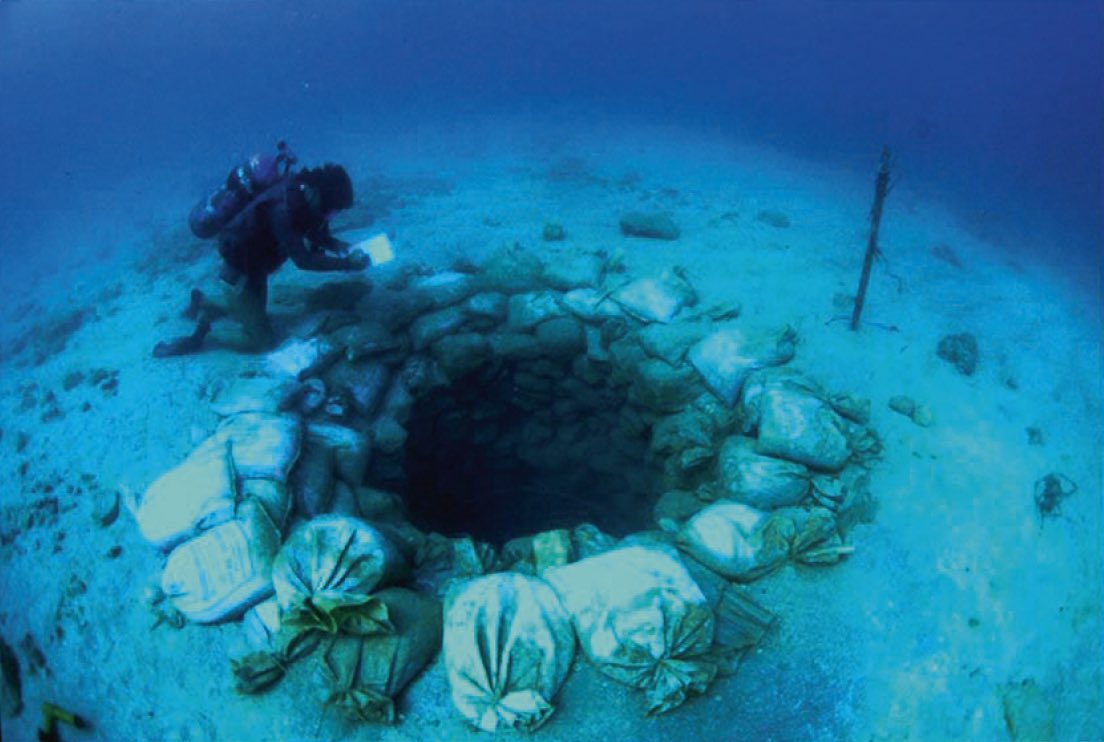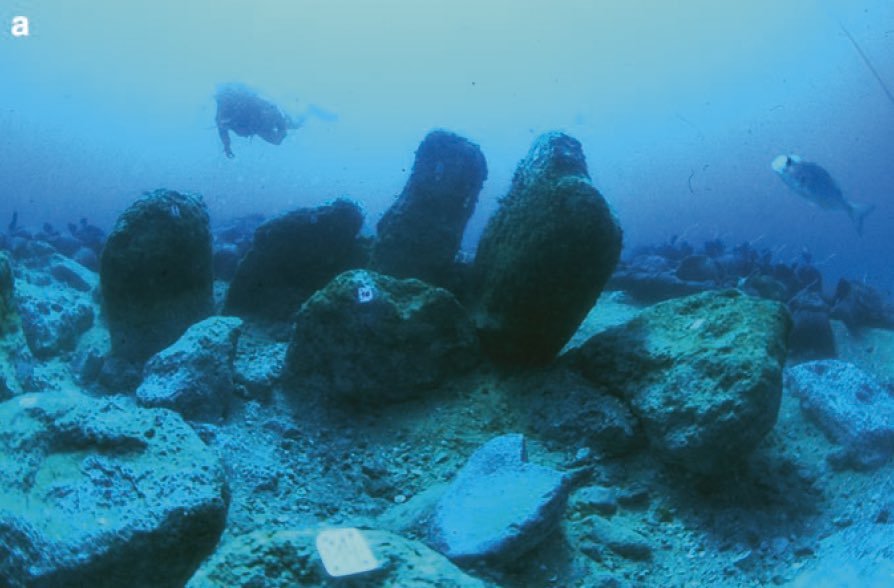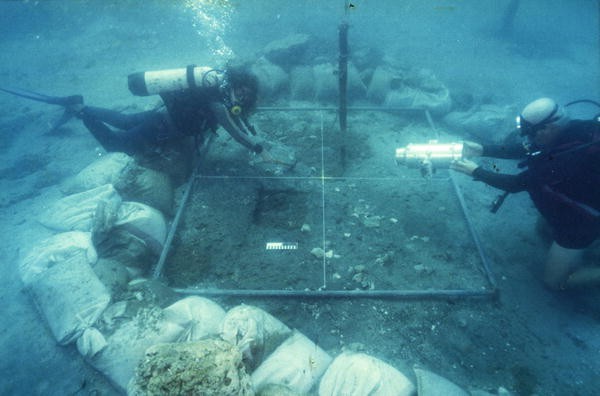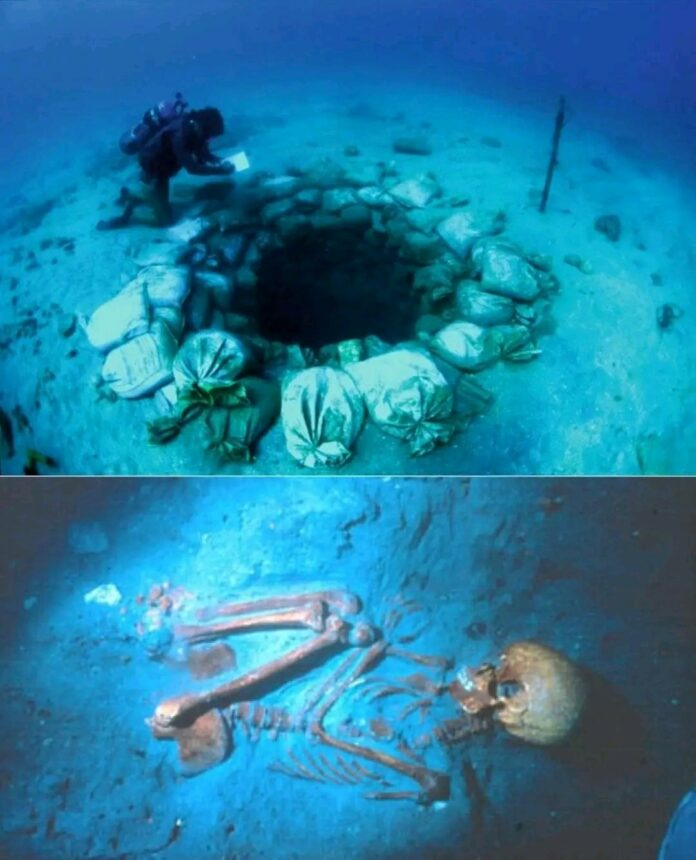Nestled beneath the waves of the Mediterranean Sea, near the coastal village of Atlit in Israel, lies a remarkable archaeological treasure trove – the submerged ruins of the ancient Neolithic site of Atlit Yam. Dating back to the 7th millennium BC, this prehistoric settlement has been remarkably well-preserved by the sandy seabed, offering a rare glimpse into the daily lives of its ancient inhabitants. From the standing stone circle to the undisturbed human remains, Atlit Yam continues to captivate researchers and the public alike, as they unravel the mysteries of this extraordinary sunken settlement.
The Wonders of Atlit Yam

Discovered in 1984 by marine archaeologist Ehud Galili, the Atlit Yam site covers an impressive 40,000 square metres and lies between 8 to 12 metres beneath the sea’s surface. Underwater excavations have unearthed a wealth of well-preserved structures and artifacts, shedding light on the sophisticated lives of the site’s ancient inhabitants.
The Megalithic Stone Circle
At the heart of the settlement stands a remarkable feature – a semicircular arrangement of seven massive megaliths, each standing between 1.0 to 2.1 metres high and weighing up to 600 kilograms. These stones, once encircling a freshwater spring, bear carved cup marks, suggesting they were used for some form of water ritual.
The Stone-Built Wells

Another significant architectural feature of Atlit Yam is the series of stone-built wells, excavated to a depth of 5.5 metres. The change in function from water source to disposal pit, likely due to the salinization of the water caused by rising sea levels, offers valuable insights into the environmental challenges faced by the settlement’s inhabitants.
Artifacts and Subsistence Patterns
The ancient artifacts discovered at Atlit Yam provide a wealth of information about the daily lives of its inhabitants. Researchers have found traces of over 100 plant species, as well as the remains of both wild and domesticated animals, including sheep, goat, pig, dog, and cattle. This suggests a sophisticated agro-pastoral-marine subsistence system, with the inhabitants transitioning from being hunter-gatherers to more settled farmers.
Uncovering the Mysteries

Despite the wealth of information gleaned from Atlit Yam, several intriguing mysteries continue to captivate researchers and the public alike.
The Earliest Known Case of Tuberculosis
One of the most significant discoveries at the site is the presence of tuberculosis (TB) within the village. The skeletons of a woman and child, found in 2008, have revealed the earliest known cases of the disease in the world, shedding new light on the health and medical practices of this ancient community.
The Cause of Submersion
The question of how Atlit Yam came to be submerged has led to heated debates among archaeologists. While some suggest a catastrophic tsunami caused by a volcanic collapse, others argue for a more gradual process of sea-level rise. Regardless of the cause, the unique conditions of the site have allowed for extraordinary preservation, making Atlit Yam a true treasure trove of ancient knowledge.
Conclusion
The submerged settlement of Atlit Yam stands as a testament to the resilience and ingenuity of our ancient ancestors. Through the careful excavation and study of this remarkable site, we continue to uncover the secrets of the past, gaining valuable insights into the daily lives, subsistence patterns, and even the health challenges faced by the inhabitants of this long-lost Neolithic community. As we delve deeper into the mysteries of Atlit Yam, we are reminded of the enduring power of archaeology to unveil the hidden stories of our shared human experience.
